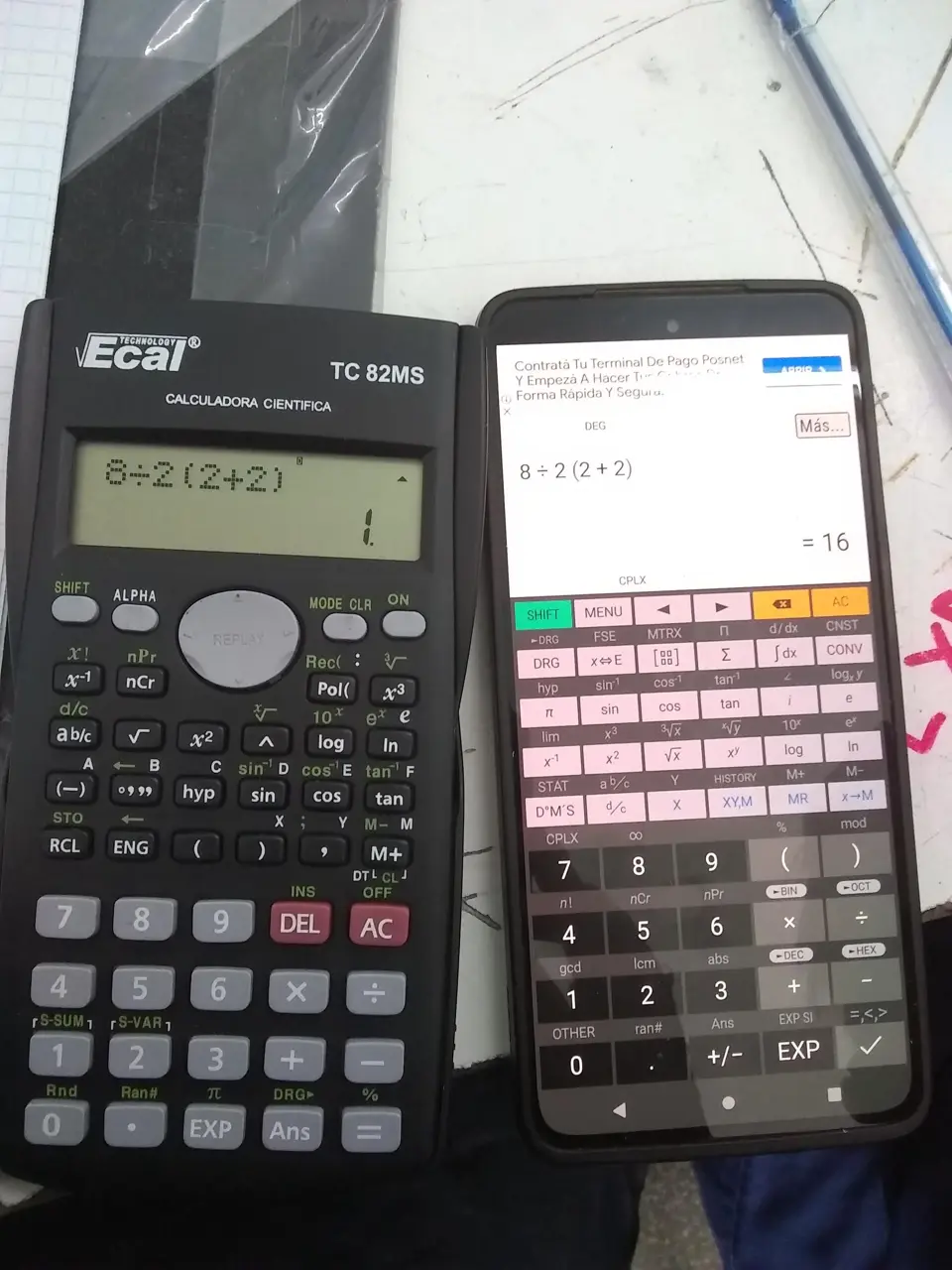this post was submitted on 03 Dec 2023
420 points (99.8% liked)
196
17009 readers
784 users here now
Be sure to follow the rule before you head out.
Rule: You must post before you leave.
If you have any questions, feel free to contact us on our matrix channel.
founded 2 years ago
MODERATORS
you are viewing a single comment's thread
view the rest of the comments
view the rest of the comments

But, since your rule has the D&M as well as the A&S in brackets does that mean your rule means you have to do D&M as well as the A&S in the formula before you do the exponents that are not in brackets?
But seriously. Only grade school arithmetic textbooks have formulas written in this ambiguous manner. Real mathematicians write their formulas clearly so that there isn't any ambiguity.
That's not really true.
You'll regularly see textbooks where 3x/2y is written to mean 3x/(2y) rather than (3x/2)*y because they don't want to format
properly because that's a terrible waste of space in many contexts.
That's what I said.
You generally don't see algebra in grade school textbooks, though.
12 is a grade. I took algebra in the 7th grade.
Grade school is a US synonym for primary or elementary school; it doesn't seem to be used as a term in England or Australia. Apparently, they're often K-6 or K-8; my elementary school was K-4; some places have a middle school or junior high between grade school and high school.
I don't know why you're getting lost on the pedantry of defining "grade school", when I was clearly discussing the fact that you only see this kind of sloppy formula construction in arithmetic textbooks where students are learning the basics of how to perform the calculations. Once you get into applied mathematics and specialized fields that use actual mathematics, like engineering, chemistry and physics, you stop seeing this style of formula construction because the ambiguity of the terms leads directly to errors of interpretation.
Sure, the definition of grade school doesn't really matter too much. Because college texts are written in ways that violate pemdas.
Look, for example, at https://www.feynmanlectures.caltech.edu/I_45.html
Notice: ∂^2f/∂y∂x is clearly written to mean ∂^2f/(∂y∂x).
What an interesting error to point out in support of pemdas.
Clearly the formatting of a paragraph of text in a textbook full of clearly and unambiguously written formulas discussing the very order of operations itself compared to the formatting of an actual formula diagram is going to be less clear. But here you've chosen to point to a discussion of why the order is irrelevant in the case under question.
Your example is the conclusion of a review of mathematics.
...
The fact that the example formula is written sloppy is irrelevant, because at no point is this going to be an actual formula meant to be solved, it's merely an illustration of why, in this case, the order of a particular operation is "immaterial".
Even if ∂^2f/∂y∂x is clearly written to mean ∂^2f/(∂y∂x), it doesn't matter because "∂2f/∂x∂y=∂2f/∂y∂x". So long as you're consistently applying pemdas, you're going to get the same answer whether you derive x first or y.
However, when it's time to discuss the actual formulas and equations being taught in the example text, clearly and unambiguously written formulas are illustrated as though copied from Ann illustration on a whiteboard instead of inserted into paragraphs that might have simply been transcribed from a lecture. Which, somewhat coincidentally, is exactly what your citation is.
Under PEMDAS, ∂2f/∂x∂y = (∂2f/∂x) * ∂y = ∂2∂y/∂x